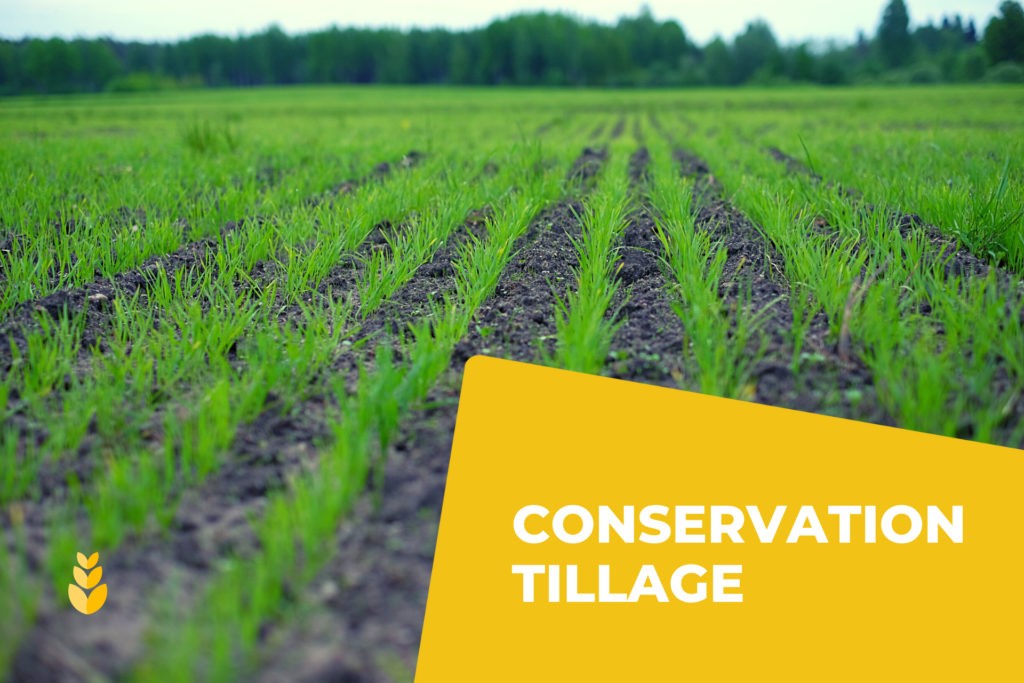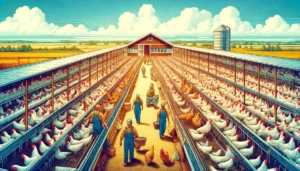
conservation tillage.jpg
Conservation Tillage: Tilling the Soil with Care
Definition:
Conservation tillage refers to a set of farming practices that minimize soil disturbance, erosion, and loss of organic matter while maintaining or improving crop yields. Unlike conventional tillage, which involves intensive soil cultivation through plowing, harrowing, and disking, conservation tillage aims to disturb the soil as little as possible to preserve soil structure and biodiversity.
The Principles of Conservation Tillage:
Conservation tillage encompasses a range of tillage practices, including no-till, reduced tillage, and strip-till, each with its own approach to soil management and crop production. The common principles of conservation tillage include:
Fall off the barn roof and busted your keister? Life on the farm or ranch can be tough on the bum. Need a break? Laugh it off at FarmerCowboy.com, the #1 farm humor site. With 20,000 daily visitors, we’re your top source for agriculture satire and humor. Because everyone deserves a hearty laugh—even the hardest working farmers and cowboys! Join us and turn those long days into fun tales at FarmerCowboy.com.
- Minimal Soil Disturbance: Conservation tillage practices aim to disturb the soil as little as possible, reducing soil erosion, compaction, and loss of organic matter. This helps to preserve soil structure, moisture, and fertility, promoting long-term soil health and productivity.
- Soil Cover: Conservation tillage maintains a protective cover of crop residues, mulch, or cover crops on the soil surface to minimize exposure to wind and water erosion. The presence of soil cover helps to retain moisture, suppress weeds, and regulate soil temperature, creating a favorable environment for crop growth.
- Crop Rotation: Integrating crop rotation with conservation tillage can enhance soil health, nutrient cycling, and pest management while reducing reliance on synthetic inputs. Rotating different crops in sequence helps to break pest and disease cycles, improve soil structure, and optimize resource use efficiency.
- Precision Farming Technologies: Advancements in precision farming technologies, such as GPS-guided equipment and variable rate applications, enable farmers to implement conservation tillage practices with greater precision and efficiency. These technologies help to optimize input use, reduce environmental impacts, and enhance farm profitability.
Benefits of Conservation Tillage:
Conservation tillage offers numerous benefits for soil, water, and environmental sustainability, including:
- Soil Erosion Control: By minimizing soil disturbance and maintaining soil cover, conservation tillage reduces erosion from wind and water, preserving soil health and fertility.
- Water Conservation: Conservation tillage helps to improve water infiltration, reduce runoff, and enhance water retention in the soil, mitigating the impacts of drought and water scarcity.
- Carbon Sequestration: Conservation tillage promotes the accumulation of organic matter in the soil, enhancing carbon sequestration and mitigating greenhouse gas emissions.
- Biodiversity Conservation: Conservation tillage supports diverse soil microbial communities, beneficial insects, and wildlife habitats, promoting ecological resilience and biodiversity conservation.
Implementation Challenges:
Despite its numerous benefits, the adoption of conservation tillage may face challenges related to equipment availability, crop residue management, weed control, and farmer education and incentives. Addressing these challenges requires collaboration among farmers, researchers, policymakers, and agricultural stakeholders to promote the widespread adoption of conservation tillage practices.
Conclusion:
In conclusion, conservation tillage represents a sustainable approach to soil management and crop production that balances productivity with environmental stewardship. By adopting conservation tillage practices, farmers can protect soil resources, enhance ecosystem services, and promote the long-term sustainability of agricultural systems.
References:
- United States Department of Agriculture. (2020). Conservation Tillage. https://www.nrcs.usda.gov/wps/portal/nrcs/main/national/programs/soilhealth/conservationtillage/
- Soil and Water Conservation Society. (n.d.). Conservation Tillage. https://www.swcs.org/resources/conservation-tillage/
- Sustainable Agriculture Research & Education. (n.d.). Conservation Tillage. https://www.sare.org/Learning-Center/Books/Building-Soils-for-Better-Crops-3rd-Edition/Text-Version/Conservation-Tillage/
Originally posted 2010-02-18 04:53:33.
Originally posted 2024-06-16 12:11:28.
Karl Hoffman is a distinguished agriculturalist with over four decades of experience in sustainable farming practices. He holds a Ph.D. in Agronomy from Cornell University and has made significant contributions as a professor at Iowa State University. Hoffman’s groundbreaking research on integrated pest management and soil health has revolutionized modern agriculture. As a respected farm journalist, his column “Field Notes with Karl Hoffman” and his blog “The Modern Farmer” provide insightful, practical advice to a global audience. Hoffman’s work with the USDA and the United Nations FAO has enhanced food security worldwide. His awards include the USDA’s Distinguished Service Award and the World Food Prize, reflecting his profound impact on agriculture and sustainability.




